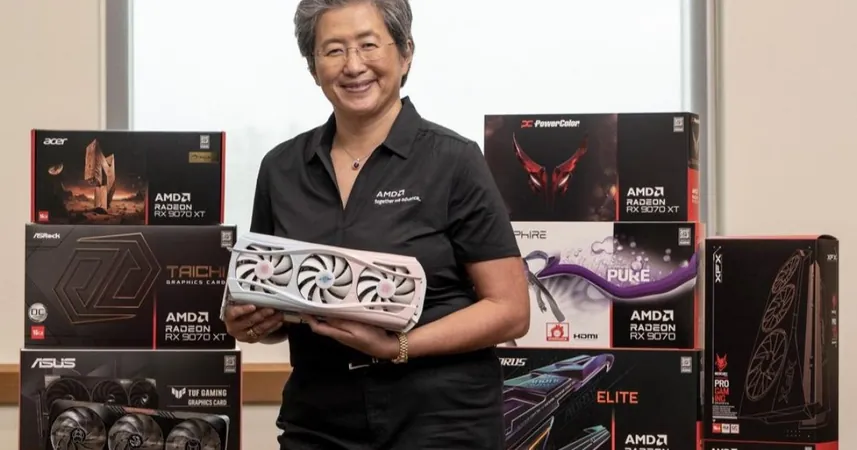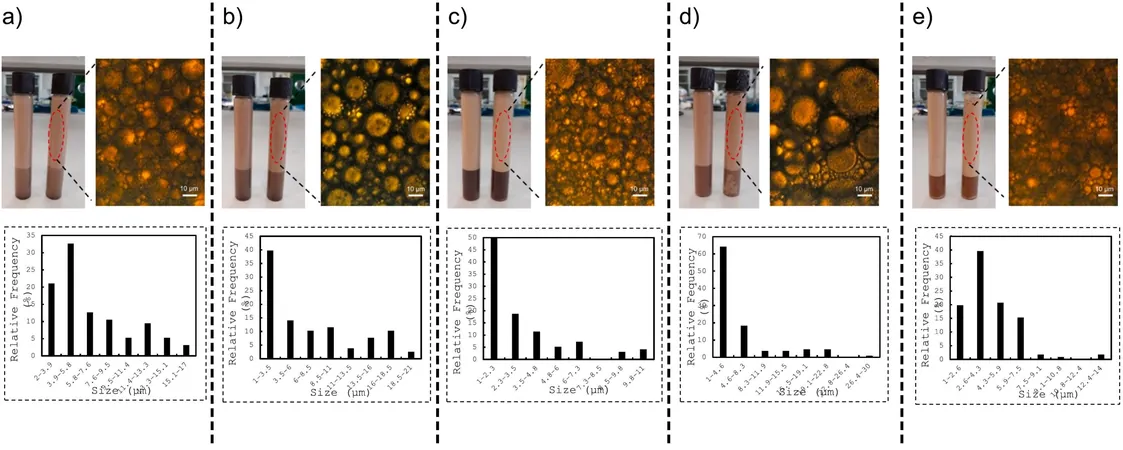
Why Your Radeon GPU Costs More Than You Think: AMD Breaks It Down!
2025-05-23
Author: Li
The GPU Pricing Debate: A Gamer's Nightmare
If there's one topic that ignites passion among gamers, it's undoubtedly "GPU pricing." This ongoing saga, which accelerated with the onset of the Covid-19 pandemic, has left many frustrated. In a revealing conversation at Computex 2025, AMD's Chief Architect of Gaming Solutions, Frank Azor, shed light on the intricate reasons behind rising prices for their Radeon GPUs.
Understanding the Complex Market Dynamics
According to Frank, the reality of GPU pricing is far from simple. It’s not just about profit margins or arbitrary decisions; it’s a tangled web of global market forces, production challenges, and retailer strategies. Frank emphasized that AMD has limited control over the final prices consumers see at the store, a point he reiterated throughout the discussion.
Why Prices Are Soaring: Key Factors at Play
Recent trends have shown GPU prices skyrocketing due to two primary culprits: cryptocurrency mining booms and global crises such as the pandemic. These events have created a demand surge that far exceeds supply, leading to significant price inflation. Frank noted that each spike has resulted in prolonged recovery periods for the market before prices normalize.
The Truth About AMD Pricing Structure
To clarify the pricing confusion, Frank explained that AMD operates on a chip-focused business model. They design and produce GPU chips, which are sold to Add-In Board (AIB) partners. These partners then integrate them into graphics cards with various memory configurations, eventually selling them to retailers. Consequently, Frank stated, "Everyone in that chain has the ability to set their own prices based on market conditions, so we have no control over the final retail price."
The Misconception Around Suggested Retail Prices
AMD's suggested retail price (SRP) is just that—suggested. The actual price is determined by a mix of AIB strategies, retailer policies, government tariffs, and broader market dynamics.
Directly Addressing Consumer Frustration
Frank tackled the consumer ire aimed at AMD during pricing hikes. He argued that AMD does not profit from inflated prices and doesn’t encourage these hikes either. Their revenue remains stable regardless of the final selling price; for example, if they sell a chip to an AIB for $100, that amount doesn’t change with retail pricing.
AMD's Commitment to Fair Pricing
Despite being powerless to set prices, Frank reassured gamers that AMD is actively working behind the scenes to encourage AIB partners and retailers to adhere closer to their SRP. This initiative reflects AMD’s commitment to ensuring gamers have access to GPUs at fair prices.
A Call for Patience: Understanding Market Trends
He urged gamers to remain patient and understand the cyclical nature of GPU pricing trends. Drawing historical parallels with past market disruptions, Frank assured the community that the current high prices are temporary and will eventually stabilize as supply chains adapt.
Who Truly Holds the Price-Setting Power?
Subtly, Frank hinted at where the real price-setting authority resides, suggesting that the partners and retailers play a crucial role in this dynamic. While he didn’t point fingers, it became clear that a more balanced approach to GPU pricing relies largely on these entities.
In summary, while the frustrations of gamers are valid, understanding the complexities of the GPU market may bring about a more constructive dialogue on pricing in the future.



 Brasil (PT)
Brasil (PT)
 Canada (EN)
Canada (EN)
 Chile (ES)
Chile (ES)
 Česko (CS)
Česko (CS)
 대한민국 (KO)
대한민국 (KO)
 España (ES)
España (ES)
 France (FR)
France (FR)
 Hong Kong (EN)
Hong Kong (EN)
 Italia (IT)
Italia (IT)
 日本 (JA)
日本 (JA)
 Magyarország (HU)
Magyarország (HU)
 Norge (NO)
Norge (NO)
 Polska (PL)
Polska (PL)
 Schweiz (DE)
Schweiz (DE)
 Singapore (EN)
Singapore (EN)
 Sverige (SV)
Sverige (SV)
 Suomi (FI)
Suomi (FI)
 Türkiye (TR)
Türkiye (TR)
 الإمارات العربية المتحدة (AR)
الإمارات العربية المتحدة (AR)